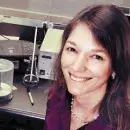
Cornelia Isabella Bargmann
Dr. Cornelia I. Bargmann is the Torsten N. Wiesel Professor and Head of the Laboratory of Neural Circuits and Behavior at Rockefeller University and a Howard Hughes Medical Institute Investigator. Bargmann is recognized internationally for her elegant work on neural development and behavior using a tiny roundworm, Caenorhabditis elegans. The worm has become a key model organism in biomedical research because, having just 302 neurons, it is possible to know the detailed wiring of the nervous system on a cellular level and deduct the worm's behavior from its circuit. With the complete genome available, precise genetic manipulation can modify circuits and behavior. Bargmann uses genetic approaches to ask how neural circuits develop and how they function to generate behavior. She focuses on olfaction at the molecular level. This work led to discoveries of the mechanisms underlying complex behaviors such as feeding behaviors. The work has continued to lead to a deeper understanding of the brain, sensory abilities, and neuronal development. In 2003, her lab discovered a "matchmaker" signaling molecule, known as SYG-1, which directs neurons to form connections with each other during early development. The finding was a major advance in scientists' understanding of the formation of nerve fibers and is relevant to brain diseases such as dyslexia, epilepsy, and autism, where the correct nerve cell connections either do not form at all or form abnormally. Bargmann is the recipient of numerous awards including the 2013 Breakthrough Award in Life Sciences, the 2012 Kavli Prize in Neuroscience, the 2012 Dart/NYU Biotechnology Achievement Award, the 2009 Richard Lounsbery Award from the U.S. and French National Academies of Sciences, and the 2004 Dargut and Milena Kemali International Prize for Research in Basic and Clinical Neurosciences. In addition to her AAAS membership, she is also a fellow of the American Association for the Advancement of Science, a member of the American Philosophical Society, a member of the European Molecular Biology Organization, a member of the National Academy of Sciences, and a member of the Norwegian Academy of Arts and Letters. Her articles appear in prominent journals such as Nature, Nature Methods, and Science.